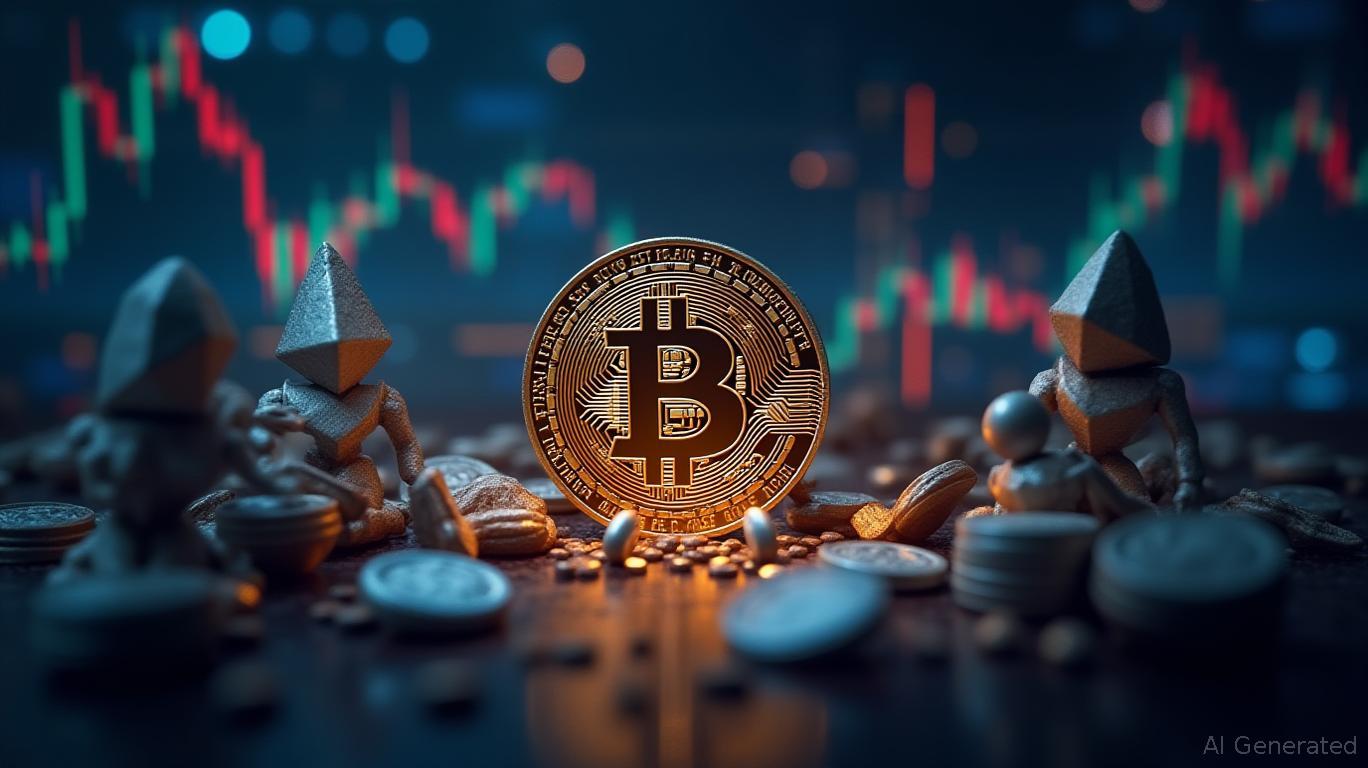NEAR's Reduced Inflation: Sensible Adjustment or Weakening of Governance?
- NEAR Protocol slashed annual token inflation to 2.4% from 5%, bypassing a failed community vote and sparking governance debates. - The October 30 upgrade reduces new token issuance by 60 million yearly, lowers staking yields to 4.5%, and prioritizes curbing dilution. - Critics, including staking firm Chorus One, accuse the core team of undermining decentralized governance, as NEAR’s price fell 8% post-announcement. - The move mirrors strategies by Solana and Polkadot but highlights tensions between econo
NEAR Protocol has reduced its yearly token inflation from 5% to 2.4%, sparking a governance controversy after the change was implemented despite a failed community vote. The update, which took effect on October 30, cuts annual token creation by almost 60 million, decreases staking rewards from 9% to 4.5%, and is intended to limit dilution, according to
Despite an on-chain vote on August 1 that received just 45.06% support—far short of the two-thirds majority needed—the inflation cut was still enacted, the crypto.news article reports. NEAR’s CTO Bowen Wang justified the decision, explaining that validator consensus is the ultimate governance authority. "The upgrade can only go live if 80% of staked tokens approve," Wang stated, highlighting that protocol changes have always depended on validator agreement rather than community ballots. Validators now have a 30-day window to adopt the update, with 80% of staked tokens required for it to take effect, according to

The move has faced strong opposition from validators and staking platforms. Chorus One, a leading staking provider, accused the core team of "compromising the integrity of protocol governance" by disregarding the community’s vote, as reported by Bitget. The company advised validators to postpone the upgrade, warning that such actions could undermine confidence in decentralized governance. Following the announcement, NEAR’s price dropped by 8%, though broader market conditions also played a role. On October 29, the token was valued at $2.32, with a 24-hour trading volume of $190 million, according to the
This reduction in inflation is part of a wider industry movement to balance token economics with long-term viability. Networks such as
This dispute highlights a fundamental issue for blockchain initiatives: balancing technical governance with democratic involvement. NEAR’s core developers assert that validator-led upgrades are crucial for maintaining network reliability, but detractors caution that excluding the community could damage trust, as the crypto.news article points out. The OKX explainer suggests that future governance updates, such as improved voting systems or greater transparency, may be necessary to resolve these issues.
Disclaimer: The content of this article solely reflects the author's opinion and does not represent the platform in any capacity. This article is not intended to serve as a reference for making investment decisions.
You may also like
BlockDAG's community-focused, institution-level approach emerges as the leading crypto model for 2025
- BlockDAG (BDAG) emerges as a top 2025 crypto contender with a $435M presale and alleged Coinbase/Kraken partnerships, signaling institutional confidence. - Its hybrid DAG + PoW architecture (15,000 TPS) and community-driven model differentiate it from speculative assets like Pudgy Penguins (PENGU) and Near Protocol (NEAR). - PENGU and NEAR face bearish trends and volatility, highlighting risks for projects reliant on VC funding or speculative demand. - BDAG's retail-focused presale (312K holders) and tra

Crypto Whale’s $400 Million Wager Challenges Market Anxiety Amid Fed Division
- A top crypto whale with a "100% win rate" has increased Bitcoin long exposure to $400M, signaling strong confidence in digital assets despite market volatility. - The whale's portfolio prioritizes Bitcoin and institutional-friendly altcoins like XRP, reflecting growing institutional adoption and regulatory clarity trends. - Fed rate-cut disagreements and EU crypto regulatory reforms highlight macroeconomic uncertainties and potential institutional confidence boosts for crypto markets. - The whale's aggre

Bitcoin Updates: Outflows in Bitcoin and Ethereum—Strategic Investment or Indication of Waning Interest?
- Bitcoin and Ethereum face $2.6B in exchange outflows, signaling potential long-term holding shifts or market pessimism post-October downturn. - Whale activity, including $260M BTC transfers from Binance, suggests strategic moves toward off-exchange storage amid reduced trading volumes. - October's 4% Bitcoin and 7.15% Ethereum losses shattered the "Uptober" trend, fueling debates over investor confidence versus market weakness. - Analysts highlight lower blockchain activity and liquidity risks, with Nove

Ethereum Updates: DeFi Enigma: Did the 20,000 ETH Withdrawal Fund an Aave Loan or Serve as a Risk Management Move?
- A crypto address withdrew 20,000 ETH from a CEX, sparking speculation it could repay an Aave loan or adjust DeFi collateral ratios. - Aave's v3 platform streamlines borrowing, driving increased utilization as traders rebalance risk in volatile markets. - Blockchain analysts note the receiving address's prior Aave interactions, though the transaction's exact purpose remains unconfirmed. - Experts caution DeFi users about liquidation risks and slippage when managing leveraged positions amid price fluctuati
